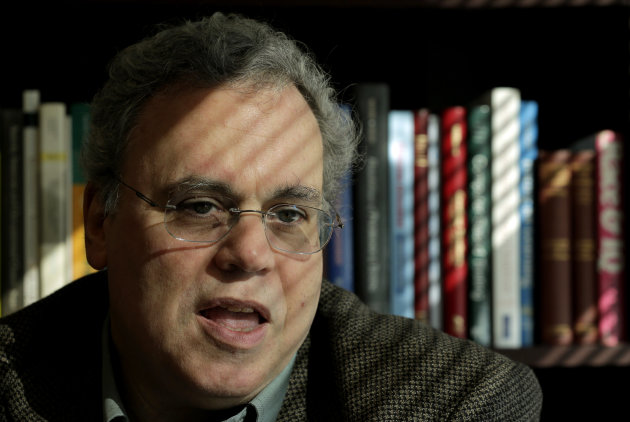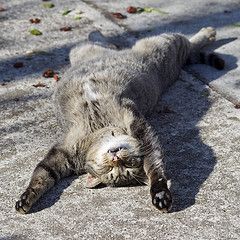
The pen may not be as mighty as the keyboard these days, but
California and a handful of
states are not giving up on
handwriting entirely.
Bucking a growing trend of eliminating cursive from elementary school curriculum's or making it optional, California is among the states keeping longhand as a third-grade staple.
The state's posture on penmanship is not likely to undercut its place at the leading edge of technology, but it has teachers
and students divided over the value of learning flowing script and
looping signatures in an age of touchpads and mobile devices.
Some
see it as a waste of time, an anachronism in a digitized society where
even signatures are electronic, but others see it as necessary so kids
can hone fine motor skills, reinforce literacy and develop their own
unique stamp of identity.
The
debate comes as 45 states move toward adopting national curriculum
guidelines in 2014 for English and math that don't include cursive handwriting, but require proficiency in computer keyboarding by the time pupils exit elementary school.
Several states, including California, Georgia
and Massachusetts, have added a cursive requirement to the national
standards, while most others, such as Indiana, Illinois and Hawaii have
left it as optional for school districts. Some states, like Utah, are
still studying the issue.
Whether it's required or not, cursive is
fast becoming a lost art as schools increasingly replace pen and paper
with classroom computers and instruction is increasingly geared to
academic subjects that are tested on standardized exams. Even the
standardized tests are on track to be administered via computer within
three years.
Experts say manuscript, or printing, may be sufficient when it comes to handwriting in the future.
"Do
you really need to learn two different scripts?" said Steve Graham,
education professor at Arizona State University who has studied handwriting instruction. "There will be plenty of kids who don't learn cursive. The more important skill now is typing."
Cursive
still has many proponents who say it benefits youngsters' brains,
coordination and motor skills, as well as connects them to the past,
whether to handwritten historical documents like the Constitution or to
their parents' and grandparents' letters.
Longhand is also a symbol of personality, even more so in an era of uniform emails and texting, they say.
"I
think it's part of your identity and part of your self-esteem," said
Eldra Avery, who teaches language and composition at San Luis Obispo
High School. "There's something really special and personal about a
cursive letter."
Avery also
has a practical reason for pushing cursive — speed. She makes her 11th
grade students relearn longhand simply so they'll be able to complete
their advancement placement exams. Most students print.
"They have
to write three essays in two hours. They need that speed," she said.
"Most of them learned cursive in second grade and forgot about it. Their
penmanship is deplorable."
For many elementary school teachers,
having children spend hours copying flowing letters just isn't practical
in an era of high-stakes standardized testing.
Third-graders may
get 15 minutes of cursive practice a couple times a week, and after the
fourth grade, it often falls off completely because teachers don't
require assignments to be written in cursive. When children write by
hand, many choose to print because they've practiced it more.
Dustin
Ellis, fourth-grade teacher at Big Springs Elementary School in Simi
Valley, said he assigns a cursive practice packet as homework, but if he
had his druthers, he'd limit cursive instruction to learning to read
it, instead of writing it. Out of his 32 students, just three write in
cursive, he noted.
"Students can be just as successful with
printing," he said. "When a kid can text 60 words a minute, that means
we're heading in a different direction. Cursive is becoming less and
less important."
It also depends on the teacher. Many younger
teachers aren't prepared to teach cursive or manuscript, said Kathleen
S. Wright, national handwriting product manager for Zaner-Bloser
Publishing, which develops instructional tools.
To remedy that, the company has developed a computer program that shows kids how to form letters.
Students
say virtually nobody writes in cursive except teachers and parents.
School assignments are required to be typed, and any personal note, such
as thank yous and birthday cards, are emails, said Monica Baerg, a
16-year-old junior at Arcadia High School.
Baerg
said she learned cursive in third grade, but has never used it and has
difficulty deciphering her parents' handwriting. When she has to write
by hand, she prints and never has a problem with speed.
"It
was kind of a waste. No one ever forced us to use cursive so it was a
hassle to remember the letters," she said. "It's not necessary to write
in cursive. Whatever you write in, you say the same thing."
At
St. Mark's Lutheran School in Hacienda Heights, cursive remains a core
subject. Students are required to write in cursive through middle school
so they become fluent at it, as well as work on computers, but
increasingly transfer students arrive without longhand skills, said
Linda Merchant, director of curriculum and instruction. They're given a
book to study and practice at home.
"We're
pretty committed to keeping it," Merchant said. "There's always going
to be situations when you're going to have to present your own writing."
Graham,
the professor, noted that the case for cursive is becoming harder to
make, due to the benefits word processing offers such as spellcheck and
cutting and pasting text, but he noted there are benefits to ensuring
good handwriting. "People form judgments about the quality of your ideas
based on the neatness of your text," he said.
For kids, the only practical purpose for learning cursive is to sign their names.
"They should teach it just for that purpose," said student Baerg. "Everybody wants a cool signature with all the fancy loops."




















 Fifty years ago, Dr. Michael Alpers went to Papua New Guinea to investigate kuru,
a horrible sickness that killed many of the native Fore people, and no
one knew why. He ended up devoting his life to solving the mystery of
the disease. Today, the decades of research by many scientists have
added mightily to the body of biological knowledge. Kuru was not spread
by bacteria, nor by a virus, nor any distinct species, but by something
completely new to the scientific community: prions, indestructible
self-propagating proteins that change shape and attack the body. And
that was just part of the mystery. How did the Fore people become
infected, and why did some contract it while others did not? Could it
possibly be spread by the ritual of eating their loved ones who died?
Fifty years ago, Dr. Michael Alpers went to Papua New Guinea to investigate kuru,
a horrible sickness that killed many of the native Fore people, and no
one knew why. He ended up devoting his life to solving the mystery of
the disease. Today, the decades of research by many scientists have
added mightily to the body of biological knowledge. Kuru was not spread
by bacteria, nor by a virus, nor any distinct species, but by something
completely new to the scientific community: prions, indestructible
self-propagating proteins that change shape and attack the body. And
that was just part of the mystery. How did the Fore people become
infected, and why did some contract it while others did not? Could it
possibly be spread by the ritual of eating their loved ones who died? Anna Sumner craved sleep, and therefore figured she must need
sleep. She slept more and more from the time she was a teenager until
it interfered with her job as a lawyer, sometimes for days at a time.
After Sumner was diagnosed with "hypersomnolence," neurologist David Rye
of Emory University and his team looked for the cause, but only got a
clue from the reactions of different drugs that were prescribed to help
her stay awake.
Anna Sumner craved sleep, and therefore figured she must need
sleep. She slept more and more from the time she was a teenager until
it interfered with her job as a lawyer, sometimes for days at a time.
After Sumner was diagnosed with "hypersomnolence," neurologist David Rye
of Emory University and his team looked for the cause, but only got a
clue from the reactions of different drugs that were prescribed to help
her stay awake.

 Giant bird was 'gentle herbivore'
Giant bird was 'gentle herbivore'